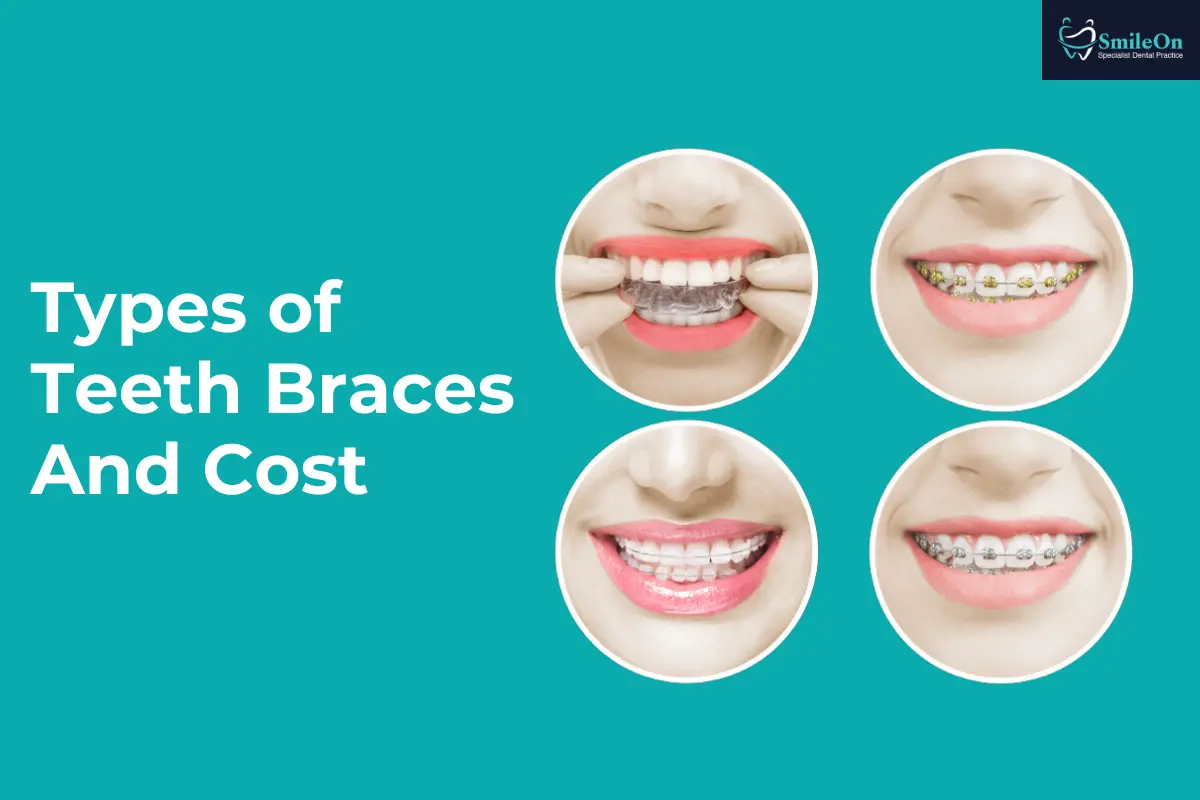Types of Braces: Which One Is Right for You?

Considering braces to improve your smile or correct a bite issue? You’re not alone—millions of people, both teens and adults, choose orthodontic treatment every year. But with so many Types of Braces available today, picking the right one can be overwhelming.
Let’s break it down. From traditional metal to invisible options like Invisalign, we’ll explore each type—pros and cons, comfort, visibility, and effectiveness—so you can make the smartest decision for your teeth.
What Are the Different Types of Braces?
There are five main types of braces commonly recommended by orthodontists:
-
Metal braces
-
Ceramic braces
-
Lingual braces
-
Self-ligating braces
-
Clear aligners (Invisalign and alternatives)
Each option suits different needs, budgets, and aesthetic preferences.
What Are Metal Braces and How Do They Work?
Metal braces are the most common and cost-effective orthodontic treatment.
They use stainless steel brackets and wires to apply consistent pressure on your teeth over time, gradually aligning your bite.
Key Features:
-
Highly effective for complex cases
-
Durable and adjustable
-
More affordable than other types
Pros:
-
Fast results
-
Lower cost
-
Available with fun colored bands for personalization
Cons:
-
Highly visible
-
Can cause minor discomfort or mouth irritation
Best for: Children, teens, or adults with complex alignment issues who are budget-conscious.
What Are Ceramic Braces and Are They Better Than Metal?
Ceramic braces work just like metal braces but are made from clear or tooth-colored materials. They blend with your teeth, offering a less noticeable appearance.
Pros:
-
Less visible than metal braces
-
Effective for both minor and complex corrections
Cons:
-
More fragile
-
Can stain if not properly cared for
-
Slightly more expensive
Best for: Teens or adults seeking a discreet but powerful orthodontic option.
What Are Lingual Braces and How Are They Different?
Lingual braces are attached to the back of your teeth (the tongue side), making them virtually invisible from the front.
They offer the same functionality as traditional braces but are custom-made for each patient.
Pros:
-
Completely hidden from view
-
Custom-fit for better precision
Cons:
-
Expensive
-
May affect speech initially
-
Harder to clean
Best for: Professionals or image-conscious individuals who want invisible braces with maximum results.
What Are Self-Ligating Braces and Why Are They Trending?
Self-ligating braces use a sliding mechanism to connect the archwire to the bracket—no rubber bands needed.
This design reduces friction, making the process faster and more comfortable.
Pros:
-
Fewer orthodontist visits
-
Less discomfort
-
Shorter treatment time
Cons:
-
Not suitable for all orthodontic issues
-
Slightly higher cost than metal braces
Best for: Patients who prefer low-maintenance braces and quicker results.
What Are Clear Aligners (e.g., Invisalign) and How Do They Work?
Clear aligners like Invisalign are a removable, nearly invisible alternative to traditional braces.
They use a series of custom plastic trays that gradually move your teeth into place—no brackets, no wires.
Pros:
-
Virtually invisible
-
Removable for eating and brushing
-
Comfortable, smooth plastic design
Cons:
-
Requires strict discipline (must wear 20–22 hours/day)
-
Not ideal for complex cases
-
Often more expensive
Best for: Adults and teens seeking a flexible, aesthetic solution for mild-to-moderate dental issues.
How Much Do Different Types of Braces Cost?
The cost of braces can vary widely based on:
-
Type of braces
-
Complexity of your case
-
Location (city, country, clinic)
-
Orthodontist experience and services included
Note: Since you’re based in Pakistan, consult with local clinics for price estimates in PKR or preferred currency. Many offer installment or financing options.
Which Type of Braces Is Best for Adults?
For adults, discretion, comfort, and flexibility are top priorities.
Clear aligners and lingual braces are ideal for those concerned about professional appearance. However, ceramic braces offer a nice middle ground—subtle yet strong.
What Are the Best Braces for Kids and Teens?
Children and teens often benefit most from metal braces due to durability, effectiveness, and affordability.
Plus, they get to customize them with colorful bands—making the process more fun.
For older teens, Invisalign Teen is a rising trend, especially if they can follow the routine strictly.
Are Braces Painful or Hard to Maintain?
Braces don’t hurt, but you may feel pressure or mild soreness after adjustments.
Maintenance Tips:
-
Brush after every meal
-
Use floss threaders or water flossers
-
Avoid sticky or hard foods
Clear aligners are easier to maintain but require consistent wearing and tray cleaning.
What’s the Shortest Treatment Time for Braces?
-
Clear aligners can straighten mild cases in 6–12 months
-
Self-ligating braces may speed up treatment by 3–6 months
-
More complex cases with metal or lingual braces may take up to 3 years
Always consult an orthodontist for a personalized treatment timeline.
Do Braces Really Work? (Real-Life Results)
Yes. Orthodontic treatment has a 95%+ success rate when patients follow the plan.
Example:
Emily, 27, chose ceramic braces for her crowded lower teeth. In 18 months, she achieved a perfect smile with minimal visibility throughout treatment—and now she can’t stop smiling in photos.
Quick Comparison: Which Braces Are Right for You?
| Need / Priority | Best Option |
|---|---|
| Low Cost | Metal Braces |
| Nearly Invisible | Clear Aligners / Lingual |
| Fastest Treatment | Self-Ligating Braces |
| Best for Teens | Metal or Ceramic Braces |
| Discreet for Adults | Invisalign / Ceramic Braces |
| Complex Cases | Metal / Lingual Braces |
Conclusion:








